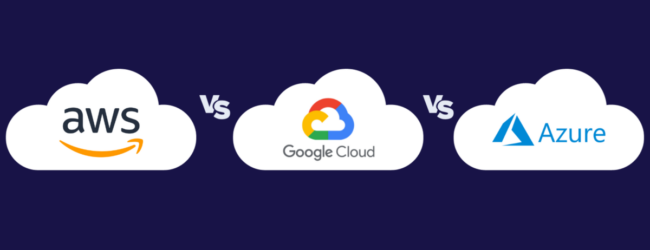
Cloud Computing Deployment Models in Business: The Benefits and Challenges
Author: Kysha Praciak
· 4 mins readIntroduction to Cloud Computing Deployment Models
When deciding on cloud computing deployment models, organizations must consider various factors. Cloud computing has transformed the way businesses operate, offering flexible and scalable solutions to cater to their IT requirements. In this article, we will discuss the advantages and challenges of different cloud computing deployment models, including public, private, hybrid, and community.
Public Cloud Deployment Model
The public cloud deployment model is perhaps the most well-known and widely used option. It involves hosting applications and services on infrastructure that is shared with other organizations. The public cloud offers several advantages, including cost savings, scalability, and ease of use. With a pay-as-you-go pricing model, businesses can avoid the upfront costs associated with building and maintaining their own infrastructure. Additionally, the public cloud allows for rapid scalability, enabling organizations to quickly scale their resources up or down as needed. However, there are some challenges associated with the public cloud, such as security concerns and potential performance issues due to shared resources.
Private Cloud Deployment Model
The private cloud deployment model, on the other hand, is dedicated to a single organization. It can be hosted on-premises or by a third-party provider. The private cloud offers enhanced security and control, making it an attractive option for businesses with strict compliance requirements or sensitive data. With a private cloud, organizations have the flexibility to customize their infrastructure and tailor it to their specific needs. However, the private cloud also comes with some challenges. It requires a significant upfront investment and ongoing maintenance costs. Additionally, the scalability of a private cloud may be limited compared to public cloud offerings.
Hybrid Cloud Deployment Model
The hybrid cloud deployment model combines elements of both the public and private clouds. It allows organizations to leverage the benefits of both models, providing them with greater flexibility and scalability. With a hybrid cloud, businesses can keep sensitive data and critical applications in the private cloud, while utilizing the public cloud for less sensitive workloads or to handle spikes in demand. This model offers the best of both worlds, but it also introduces complexity. Integration between the private and public clouds can be challenging, and organizations need to carefully manage data and workload placement to ensure optimal performance and security.
Community Cloud Deployment Model
The community cloud deployment model is designed for a specific community or industry. It is shared by multiple organizations with similar requirements, such as regulatory compliance or security standards. The community cloud allows for collaboration and resource sharing among organizations, while still providing the benefits of dedicated infrastructure. This model can be cost-effective and provide industry-specific solutions, but it requires strong governance and coordination among the community members.
Need Expert IT Solutions?
Get a Free Consultation Today!
Whether you’re dealing with network issues, cybersecurity concerns, or software integration, our team of IT experts is here to help. Don’t let tech troubles slow you down. Call us now for a complimentary initial assessment, or click below to fill out our quick contact form. Let’s make technology work for you.
Benefits of Cloud Computing Deployment Models
Regardless of the deployment model chosen, cloud computing offers several benefits for businesses:
- It provides cost savings by eliminating the need for upfront investments in hardware and software
- A pay-as-you-go pricing model, means that organizations only pay for the resources they use.
- It enables scalability, allowing businesses to easily adjust their resources based on demand, thus it can help organizations respond quickly to changing market conditions and avoid overprovisioning.
- It provides increased flexibility; with cloud-based solutions, employees can access applications and data from anywhere, at any time, using any device with an internet connection, promoting collaboration and enables remote work, making businesses more agile and responsive.
- It offers improved reliability and disaster recovery capabilities; cloud providers typically have robust backup and redundancy systems in place, ensuring that data is protected and accessible even in the event of a hardware failure or natural disaster.
Challenges of Cloud Computing Deployment Models
While cloud computing offers numerous benefits, it also presents some challenges that organizations need to consider:
- A primary concern is security; when data and applications are stored in the cloud, businesses must trust their cloud provider to implement adequate security measures and protect their sensitive information.
- Compliance with industry regulations can be a challenge in the cloud, as organizations need to ensure that their cloud provider meets the necessary compliance requirements and can provide the necessary documentation and audits.
- Vendor lock-in; once an organization adopts a specific cloud provider or deployment model, it can be difficult and costly to switch to another provider or model, therefore, organizations need to carefully evaluate their long-term goals and requirements when choosing a cloud deployment model to avoid potential vendor lock-in.
Factors to Consider When Choosing a Deployment Model
When selecting a cloud computing deployment model, there are several factors that organizations need to consider. First and foremost, they need to assess their specific needs and requirements. This includes considering factors such as security, scalability, compliance, and performance. Organizations should also evaluate their existing infrastructure and determine the level of control they require over their IT resources. Budgetary considerations are also important, as different deployment models have varying cost structures.
Additionally, organizations need to consider their long-term goals and growth plans. Scalability is a critical factor, as businesses need to ensure that their chosen deployment model can accommodate future growth. Integration with existing systems and applications should also be evaluated, as seamless integration can help minimize disruption and maximize the benefits of cloud computing.
Best Practices for Successful Cloud Deployment
To ensure a successful cloud deployment, organizations should follow some best practices. First and foremost, they should conduct a thorough assessment of their current IT infrastructure and identify the workloads that are best suited for the cloud. This assessment should consider factors such as data sensitivity, performance requirements, and compliance needs. It is also essential to create a detailed migration plan, including the sequencing of workloads and dependencies.
Organizations should also implement strong security measures to protect their data in the cloud. This includes using encryption, multi-factor authentication, and regular security audits. Additionally, businesses should have a clear governance framework in place to manage their cloud resources effectively. This framework should define roles and responsibilities, establish policies and procedures, and provide guidelines for monitoring and managing the cloud environment.
Conclusion
Choosing the right cloud computing deployment model is a critical decision for businesses. Each model – public, private, hybrid, and community – offers its own benefits and challenges, and organizations need to carefully evaluate their needs and requirements in order to make an informed decision. Factors such as security, scalability, compliance, and budget should all be considered. By following best practices and conducting a thorough assessment, organizations can ensure a successful cloud deployment that meets their business objectives and paves the way for future growth.
References
- Microsoft. (n.d.). What are private, public, and hybrid clouds? [Online] Available at: https://azure.microsoft.com/en-us/resources/cloud-computing-dictionary/what-are-private-public-hybrid-clouds [Accessed 18 March 2024].
- LinkedIn. (n.d.). Exploring the Top 4 Cloud Deployment Models: A Comprehensive Guide [Online] Available at: https://www.linkedin.com/pulse/exploring-top-4-cloud-deployment-models-comprehensive/ [Accessed 18 March 2024].





Share